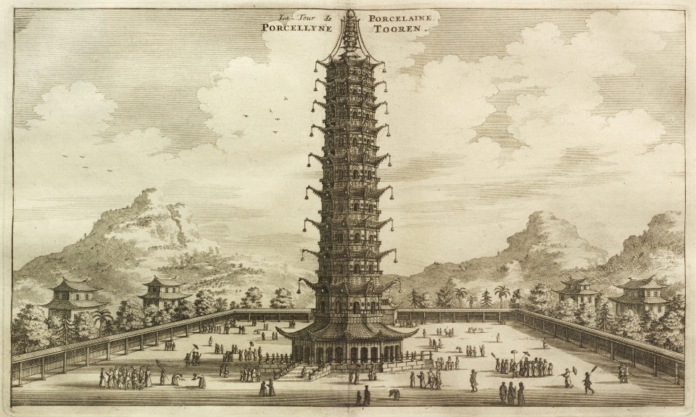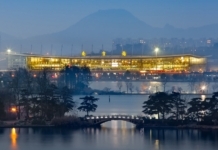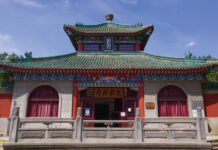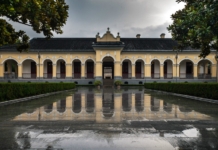During the medieval ages, our city was home to one of the Seven Wonders of the World, the Porcelain Tower of Nanjing. Described as the “best contrived and noblest structure of all the East”, by French mathematician Le Comte, the building, also known as “Temple of Gratitude”, was designed and commissioned by the Chinese Emperor, Yongle, in honour of his parents.
Construction of the tower was completed in the 15th century, over a period of 7 years. According to common belief, the Porcelain Tower originally was supposed to comprise 13 stories and have a total height of approximately 100 metres. As it was, even at nine stories and reaching a height of 80 metres, it ranked among China’s tallest buildings of the time.
Although it was not the tallest pagoda in China, it was commonly considered the most beautiful. The Porcelain Tower’s most outstanding characteristic was the material used in its construction, also lending the tower its name.
The white porcelain bricks that lined the outside of the building reflected sunrays during daytime. With its undoubted aesthetic appeal, the porcelain also prevented the tower from heating up. The bricks were also glazed with different colours, combined to depict images of animals, flowers, and landscapes as well as Buddhist scenes.
The shape of the building was also striking, forming an octagon at the base, while a golden sphere on its rooftop caught people’s eyes.
In order to reach the top floor, it was necessary to climb 190 steps leading up a spiral staircase, while at night, approximately 140 lamps were hung from the Tower, providing both illumination and an even more stunning appearance than during daytime.
The pagoda quickly became famous at home and abroad, with Western visitors returning home to describe its beauty to their compatriots. The European admiration even went so far as to incite the construction of a number of pagodas inspired by the Porcelain Tower, including one in London’s Kew Gardens.
Subjected to a turbulent history, the Tower experienced partial destruction in 1801, when a lighting bolt struck, blasting away the top three stories. They were soon restored, but less than 50 years later, the Tower became a victim of the Taiping Rebellion in 1850, when the Rebels wanted to keep citizens from using the tower as a hideout or a fort from which to launch attacks. Therefore, they tore apart the stairwell inside the tower. While not completely destroyed, the Tower lay abandoned for the following 6 years. Finally, in 1856 the Porcelain Tower’s life came to an end when the Taiping Rebels overran it in another angry attack. Their reasons for doing so are unclear, but it is commonly believed that they either wanted to make sure it could not be used as an observation post by their enemies or because they had a superstitious fear of it.
Fast forward to 2011, when Wang Jianlin, one of China’s richest men, donated ¥1 billion towards the tower’s re-construction. The new tower, named Bao’en Si, built on the same site, includes fitting tributes to its predecessor.












